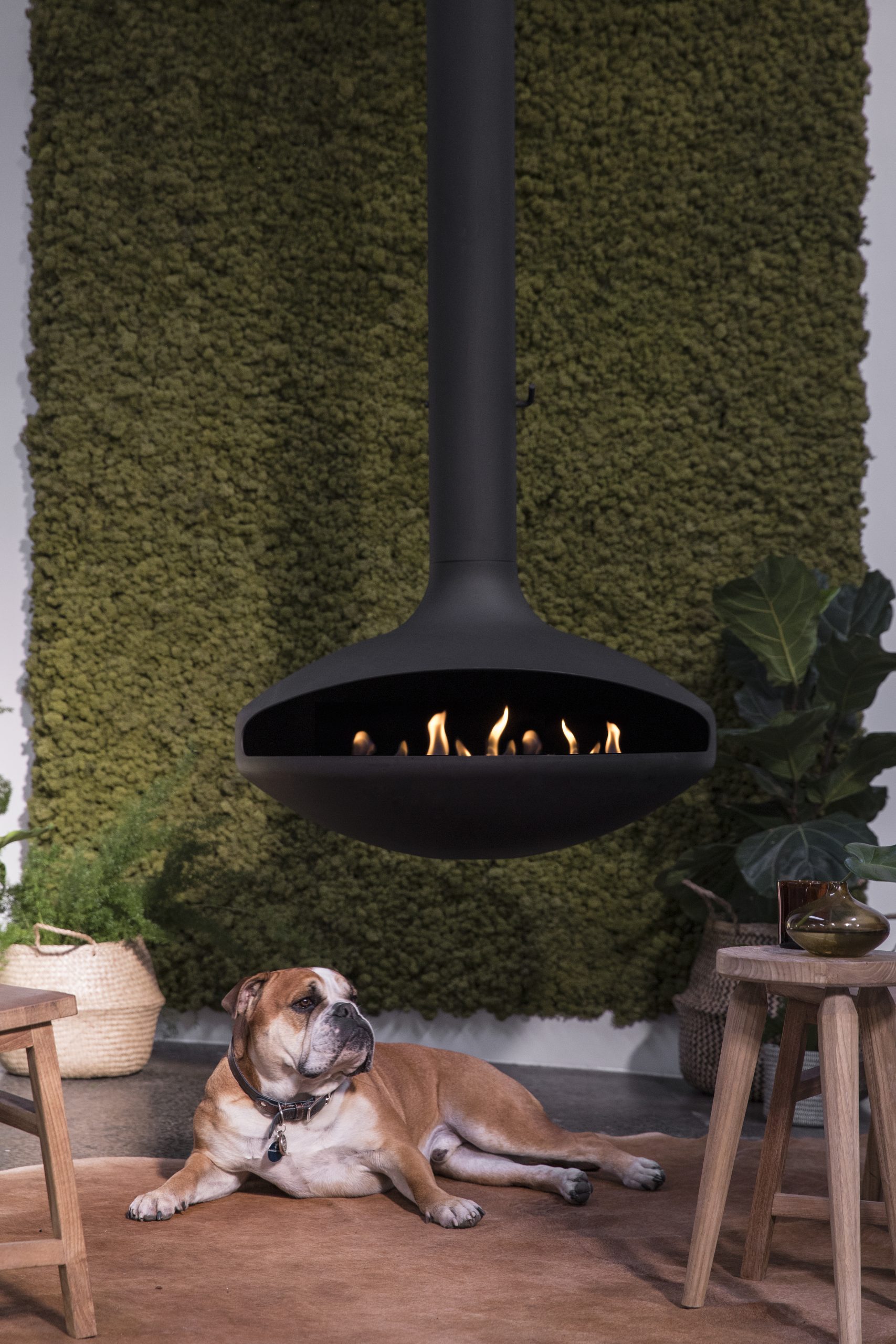To operate your wood heating system efficiently, you must have confidence that it is safe. Efficient operation means burning each load of wood hot for a short period. Worries about safety can force you to keep temperatures too low, which leads to low efficiency, high pollution and the potential for chimney fires. Have your system inspected by a WETT certified technician and upgrade it to meet safety codes before using the tips provided here.
How to buy or prepare good firewood
It has been said that a long straight row of firewood standing in the yard in springtime is like money in the bank. It is indeed – as it dries in the summer sunshine, you are collecting interest. Whatever wood species you use, it will burn more efficiently and be more convenient to use if it is properly seasoned. Here are some tips for firewood preparation.
1. Very hard woods like oak and maple are good fuels for cold winter weather because they produce long lasting, high output fires. These hardwoods take much longer to season than softer woods.
2. Softer woods like poplar, aspen, willow, spruce and pine are good when heat demand is low because they light easily, burn quickly and don’t leave a long lasting charcoal bed.
3. Firewood should be processed in early spring to be ready for burning that fall. Exceptions: 1. large pieces of hard wood like oak and maple take at least a year to season; 2. drying in damp maritime climates can take longer.
4. Piece length should be at least 3” shorter than the firebox.
5. Shorter pieces are easier to handle and make fire maintenance easier; 14” to 16” is a good length.
6. Split the logs to a variety of sizes, from 3” to 6” at the largest cross sectional dimension. Most commercial firewood is not split small enough for convenient fire management.
7. The larger the stove or furnace, the larger the pieces can be, but never larger than 8” diameter.
8. Tree tops and wind falls can be used for firewood down to less than 2” diameter.
9. Never leave firewood in a pile on the ground for more than a couple of days. Wet wood on the ground quickly attracts bugs and mold.
10. Wood should be stacked in an open area exposed to sun and wind to dry. Green wood can take twice as long to season in a wood shed or in deep shade.
11. Stack wood on rails to keep it off the ground.
12. The triangular shape of split pieces wedge together as they are stacked and help to make the pile stable.
13. The more quickly the surface of the pieces dries, the less chance there is of molding and bug infestation
14. Cover just the tops of firewood stacks.
15. Avoid stacking more than four feet high because tall piles become unstable.
16. Shorter firewood pieces (less than 16”) make for narrow tippy stacks; use sticks propped against each side of the piles so wind doesn’t blow them over.
17. When seasoned, usually by late September, the wood can be moved to winter bulk storage where it should be fully sheltered from rain and snow.
18. The ideal winter storage is close to, but not inside, the house.
19. Avoid storing large amounts of wood in the house because mold spores and moisture can affect indoor air quality, a potential problem for people with asthma or alergies.
20. Bring in wood to warm up before burning, but only one or two week’s supply at a time.
How to build foolproof wood fires
1. The function of the kindling fire is to quickly heat up the chimney and the brick and steel of the firebox to create the environment for a stable, brightly burning fire, without having to open the loading door several times to adjust it.
2. The edges of firewood pieces heat up and ignite first. The more edges close together in your kindling fire, the faster it will ignite.
3. Softer woods like pine, cedar, spruce and poplar make better kindling than harder woods because they are easier to split up fine and they light more easily.
4. Logs from which kindling is split can be cut as short as six inches to make splitting and fire building easier.
5. Before building a fire, remove excess ash from the firebox; never let ash build up to more than two inches.
6. Open the air control fully and open the bypass damper if the appliance has one.
7. When building a kindling fire, avoid a structure in which the pile collapses, smothering a struggling fire. Following are two popular ways to avoid the collapsed kindling fire.
8. Two parallel logs: Place two split logs parallel to each other in the firebox with a space between. Fill the space with newspaper and fine kindling and place several larger kindling pieces crosswise on top. Light the paper.
9. Top down fire: Place standard sized pieces first, a few pieces of heavy kindling next, and finally, fine kindling. Roll up single sheets of newspaper corner to corner, tie a knot in each and place four or five on top of or in front of the kindling. Light the paper. The top down fire does not smoke and can provide two or more hours of effective heating without having to open the door to add wood or adjust the fire.
The other popular option is to use commercial or home-made fire starters made of sawdust and paraffin wax. These work fine as long as there is enough kindling near the pieces.
11. Leave combustion air inlets wide open at least until the firebox is full of flame and the wood is charred black and the edges are glowing red.
How to maintain wood fires for heating efficiency
1. The goal in maintaining wood fires is to prevent the wood from smoldering because any smoke that passes out of the firebox will condense as creosote in the chimney or be released outdoors as air pollution. Smoke is not a normal byproduct of wood combustion but is waste resulting from poor combustion. There will be little or no visible smoke from your chimney if the wood burns with bright, active flames.
2. After an overnight fire you will find the remaining coals at the back of the firebox, furthest from the combustion air inlet. This is the time to remove a small amount of ash.
3. Avoid spreading the charcoal out evenly and placing the new load of wood on top because this can lead to extended smoldering before the wood ignites.
4. Find where the combustion air enters the firebox. For most stoves, fireplaces and furnaces this is at the front where the loading door is. Rake the coals toward the air inlet. Place the wood on and behind the coals.
5. Pokers are for decorative fireplaces. A properly-built heating fire should not need poking.
6. A rake is the best stoking tool for heating fireplaces, stoves and furnaces. A simple rake can be made from a 3/8” steel rod 20” – 25” long with a 1/8” thick steel rectangle measuring 1 1/2” x 3 1/2” welded to the end.
7. About 1/5th of the heat from the burning wood should be given to the chimney to produce strong, stable draft. Draft is the pressure difference that drives the flow of air and gases through the system. Efforts to prevent heat “loss” to the chimney are mistaken because they lead to wasteful and dangerous smoldering.
8. Avoid adding a log each hour in the attempt to produce a steady heat output. Wood burns best in cycles. A cycle begins when a new load of wood is placed on and behind a coal bed and ends when that wood is reduced to a similar-sized coal bed.
a small crisscross load for mild weather
9. To produce low heat output in mild weather, use small loads of soft wood placed in a crisscross formation.
10. To produce high heat output in cold weather, use larger loads of hard wood placed compactly in the firebox.
11. Long burn times are not an indication of efficiency or effectiveness. In fact, peak efficiency and heating effectiveness are usually achieved with burn cycles of eight hours or less.
12. If your firebox floor is roughly square, you can load the wood east-west so the combustion air reaches the side of the logs, or north-south so the air approaches the ends of the logs. An east-west load breaks down more slowly, so is a good arrangement for overnight fires in spring and fall when heat demand is low. A north-south load can be larger, but breaks down more quickly, so it is good for high output, long lasting fires in cold weather.
13. When rekindling from coals, rake the coals towards the air inlet, place fuel behind the coals, and always place the smallest, driest piece of firewood directly on the coal bed to act as the ‘igniter’. Your igniter should begin flaming almost immediately and as it burns it will ignite the larger pieces.
14. Leave the air control wide open until the firebox is full of flame, the new wood is charred black and the edges are glowing red. Turn down the air in two or three stages.
Dealing with wood ashes
1. Remove a small amount of ash frequently. During 24 hour heating in cold weather, a small amount of ash can be removed as often as each morning before the new fire is kindled to make raking coals and kindling loads throughout the day more convenient.
2. Ashes often contain live coals which can stay hot and give off carbon monoxide for days. So, put ashes in a metal container with a lid and place the container outside the house on a concrete surface and away from combustible material.
3. Some ash can be used as a lawn and garden additive to provide soil nutrients and reduce acidity. It can be used on compost piles to maintain neutral acidity levels. Some people use ashes to provide traction on icy driveways and sidewalks. Excess wood ash can be taken to garbage disposal sites.
To read the full article visit: woodheat.org/proven-tips.html






